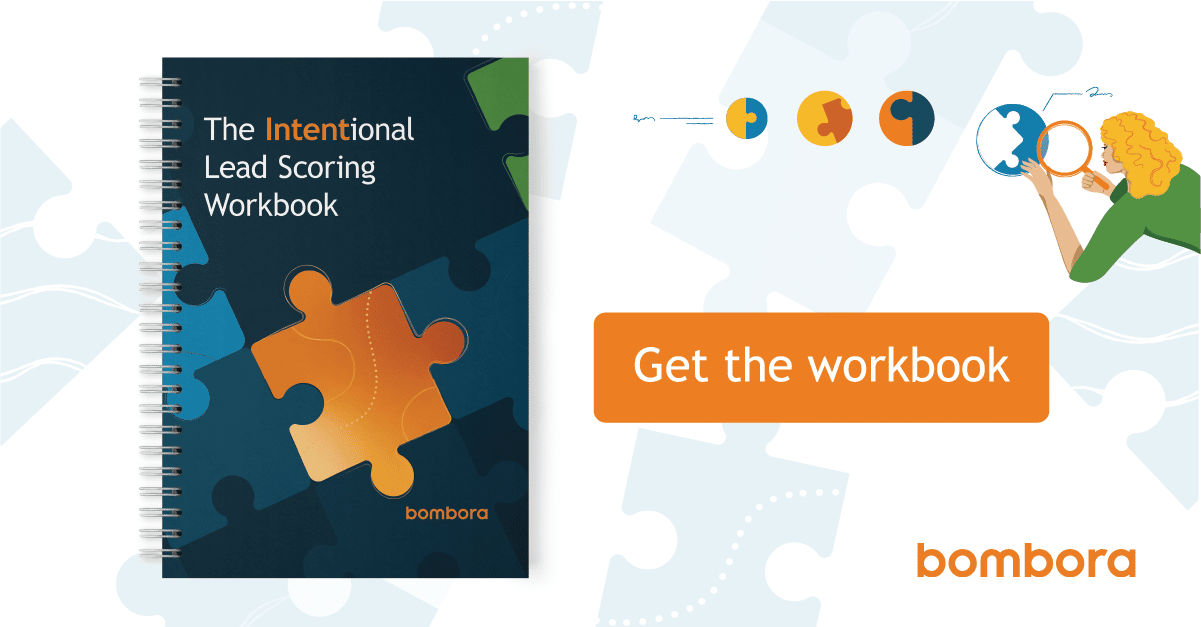6 reasons you should integrate Intent data into your CRM today
Over 300% increase in new, qualified meetings booked?
By now you’ve probably seen the big results Intent data can deliver across your entire marketing and sales process.
…but, if it’s not integrated with the rest of your MarTech stack, Intent data can be cumbersome and you’re bound to miss critical insights you could have otherwise captured. Here are the top reasons why you should integrate Intent data into your systems today.
Easily integrate Intent data into your CRM and systems
1. Reduce errors and manual work
Does anyone really want to manage another spreadsheet?
Let’s face it, spreadsheets are clunky, inconvenient on mobile, and you can never find them when you need them.
Thankfully, when you integrate your Intent data directly into your CRM, you can kiss those cluttered spreadsheets goodbye. Now all of your Intent data will be right where you need it when you need it the most.
No more transcription errors from sorting spreadsheets and playing with pivot tables, just high-quality Intent data in the place where the critical decisions are being made.
2. Enrich your reporting and insights
The logic is simple: The more data you put in, the better insights you get out.
…but, if your Intent data isn’t in your CRM, you’re likely missing out on the richer insights that it can bring when combined with the rest of your data:
With Intent data onboard, you can conduct more advanced analysis and data manipulation to discover factors like geography, competitive threats, week-over-week changes in intent, and product-level Intent clusters to make it easier to forecast pipeline and identify cross-selling and up-selling opportunities.
Now you can pump out rich dashboards and visualizations to help you catch trends, patterns, and outliers that you wouldn’t have noticed without Intent data!
3. Save time for your sales team
Tired of sending prioritized account lists to your sales team every week?
You should be!
Sending separate lists takes up your valuable time and breaks the sales team out of their flow.
Instead of creating and lobbing lists over to sales, integrate Intent data right into your CRM so sales can self-prioritize their accounts and marketing leads right in the CRM itself.
They’ll have easy access to prospects showing intent (and know which topics they’re interested in) without having to fumble through email or excel.
4. Target interested customers faster
Which of your prospects should you target for your next campaign?
(Hint: “Let me check my spreadsheet” is not an acceptable answer.)
Having a seamless, always up-to-date list of prospects in your CRM is a good start, but adding their level of intent can take your targeting capabilities to the next level.
Now, instead of just putting your content in front of the right prospects, you can also be sure that you’re serving the right content appropriate to match their stage in the buying journey.
…and, with all of this information in the right place, you can beat your competition to the punch.
5. Curate more relevant and timely content
What topics are your customers most interested in right now?
Don’t just guess – Know with Intent data!
See what topics your customers care about at this very moment, and tag them in your CRM, so your marketing and sales can share relevant content and outreach with those accounts.
Use Intent topics to guide your content creation and decide what subject matters to prioritize.
Help your customers solve their current problems, and they’ll come back to you every time.
6. Prioritize your leads and accounts properly
You probably already have a lead scoring system set up (If you don’t, check out our latest Lead Scoring Workbook!), but, without Intent data, a lead scoring program can only tell you who should be ready to buy — not who’s actually ready.
Without Intent data, your rubric for lead scoring is limited to mostly static factors like firmographic and demographic data – Factors that don’t change regardless of if your customer is in the right stage of their buying cycle or not, and this hurts its effectiveness.
With Intent data, you can improve the lead qualification process by scoring leads based on specific behaviors for each account –
Now you can prioritize outreach for leads who are showing a higher chance of converting, and, for leads who aren’t quite ready to buy, you can track buying triggers and signals to help guide them to your solution when they’re ready.
7. Your CRM + Intent data: So happy together
So, can you function with your Intent data outside of your CRM?
Sure…but we wouldn’t recommend it.
Not integrating Intent data into your CRM doesn’t just mean lost efficiency, it also means missed opportunities, weaker insights, and more difficulty aligning sales and marketing around key accounts.
Have no fear! At Bombora, we have integrations with all of the major MarTech vendors, and a friendly team ready to help you succeed.
So, are you ready to get plugged in? See all of our integrations and partnerships here.





